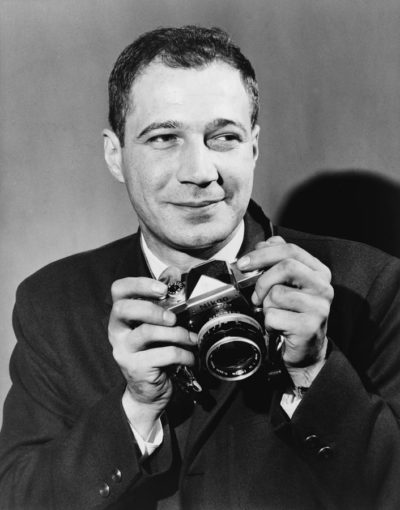Eddie Adams (Edward Thomas Adams)

Eddie Adams joined the United States Marine Corps in 1951 during the Korean War as a combat photographer. One of his assignments was to photograph the entire Demilitarized Zone from end to end immediately following the war. This took him over a month to complete. It was while covering the Vietnam War for the Associated Press that he took his best-known photograph – the picture of police chief General Nguyễn Ngọc Loan executing a Vietcong prisoner, Nguyễn Văn Lém, on a Saigon street, on February 1, 1968, during the opening stages of the Tet Offensive. Eddie Adams won the 1969 Pulitzer Prize for Spot News Photography and a World Press Photo award for the photograph (captioned ‘General Nguyen Ngoc Loan executing a Viet Cong prisoner in Saigon’), but would later lament its notoriety. Writer and critic David D. Perlmutter points out that ‘no film footage did as much damage as AP photographer Eddie Adams’s 35mm shot taken on a Saigon street … When people talk or write about [the Tet Offensive] at least a sentence is devoted (often with an illustration) to the Eddie Adams picture’. Anticipating the impact of Adams’s photograph, an attempt at balance was sought by editors in the New York Times. In his memoirs, John G. Morris recalls that assistant managing editor Theodore M. Bernstein “determined that the brutality manifested by America’s ally be put into perspective, agreed to run the Adams picture large, but offset with a picture of a child slain by Vietcong, which conveniently came through from AP at about the same time”. Nonetheless, it is Adams’s photograph that is remembered while the other far less dramatic image was overlooked and soon forgotten.
In Regarding the Pain of Others, Susan Sontag is disturbed by what she sees as the staged nature of the photograph. She writes that ‘he would not have carried out the summary execution there had [the press] not been available to witness it’. However, Donald Winslow of the New York Times quotes Eddie Adams as having described the image as a ‘reflex picture’ and ‘wasn’t certain of what he’d photographed until the film was developed’. Furthermore, Winslow notes that Adams ‘wanted me to understand that “Saigon Execution” was not his most important picture and that he did not want his obituary to begin, “Eddie Adams, the photographer best known for his iconic Vietnam photograph ‘Saigon Execution’’. It was while covering the Vietnam War for the Associated Press that he took his best-known photograph – the picture of police chief General Nguyễn Ngọc Loan executing a Vietcong prisoner, Nguyễn Văn Lém, on a Saigon street, on February 1, 1968, during the opening stages of the Tet Offensive. Eddie Adams won the 1969 Pulitzer Prize for Spot News Photography and a World Press Photo award for the photograph (captioned ‘General Nguyen Ngoc Loan executing a Viet Cong prisoner in Saigon’), but would later lament its notoriety. Writer and critic David D. Perlmutter points out that ‘no film footage did as much damage as AP photographer Eddie Adams’s 35mm shot taken on a Saigon street … When people talk or write about [the Tet Offensive] at least a sentence is devoted (often with an illustration) to the Eddie Adams picture’.
Anticipating the impact of Adams’s photograph, an attempt at balance was sought by editors in the New York Times. In his memoirs, John G. Morris recalls that assistant managing editor Theodore M. Bernstein “determined that the brutality manifested by America’s ally be put into perspective, agreed to run the Adams picture large, but offset with a picture of a child slain by Vietcong, which conveniently came through from AP at about the same time”. Nonetheless, it is Eddie Adams’s photograph that is remembered while the other far less dramatic image was overlooked and soon forgotten. In Regarding the Pain of Others, Susan Sontag is disturbed by what she sees as the staged nature of the photograph. She writes that ‘he would not have carried out the summary execution there had [the press] not been available to witness it’. However, Donald Winslow of the New York Times quotes Adams as having described the image as a ‘reflex picture’ and ‘wasn’t certain of what he’d photographed until the film was developed’. Furthermore, Winslow notes that Adams ‘wanted me to understand that “Saigon Execution” was not his most important picture and that he did not want his obituary to begin, “Eddie Adams, the photographer best known for his iconic Vietnam photograph ‘Saigon Execution’’.
Born
- June, 12, 1933
- USA
- New Kensington, Pennsylvania
Died
- September, 18, 2004
- USA
- New York, New York
Cemetery
- Greenwood Memorial Park
- Lower Burrell, Pennsylvania
- USA

